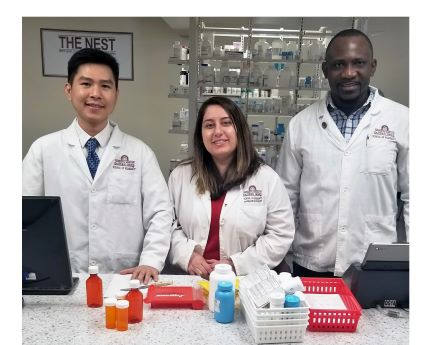
UMES to benefit from a National Science Foundation technology upgrade grant
Tuesday, July 7, 2020
University of Maryland Eastern Shore graduate programs stand to benefit from a federal grant that will be used to provide access to a world-class high-speed data network.
UMES’ share of nearly $800,000 awarded by the National Science Foundation will support instruction and research in the School of Pharmacy and Health Professions, cybersecurity engineering technology and marine sciences.
The Maryland Research and Education Network, a technology service provider for the University System of Maryland, coordinated the application on behalf of a consortium of institutions that also included Frostburg State and Salisbury universities, labs operated by the University of Maryland Center for Environmental Science, the University of Maryland medical school’s psychiatric research center and Morgan State University.
The hardware and software upgrade will “allow researchers … to reliably connect to ‘big data’ repositories and increase inter-institution collaboration,” according to Jerome F. Waldron, UMES’ chief information (technology) officer.
Dr. Ray Barghi, the Maryland Research and Education Network’s executive director, said the network upgrade will primarily benefit science, technology, engineering and math researchers at the six institutions named in the grant application.
“STEM educators work with and generate lots of data,” Barghi said. “So their needs for speed are different. The National Science Foundation wants to make sure the researchers are taken care of.”
UMES identified three academic / research areas that need the ability to access and transmit data via a high-speed network:
Cybersecurity Engineering Technology

This program involves access to large amounts of log and network traffic data to be used in assignments and projects. Students need to download and explore several terabytes of large-scale data models and logs. These datasets and files currently take days to download, hampering construction of analytics models. A bandwidth increase will dramatically improve the delivery of the class material and make a significant difference in the success of this program.
Marine-Estuarine-Environmental Sciences
UMES’ marine science graduate program works closely with other institutions and the federal government, which amass vast amounts of data that guide complex research projects. Access to a high-speed network will enable UMES to step up its ongoing collaborative efforts in research and education, especially those related to the Chesapeake Bay and its ecosystem.
Pharmacy and Health Professions’ simulation lab
Through use of smart, life-like mannequins, and setting equipment, the new network will provide real-time simulation of various health care conditions. It will be supported by an electronic monitoring room and a briefing room in the new health professions building being built to house pharmacy, physical therapy and physician assistant instructional space.
To manage the volume of audio and video content that will be stored on the cloud, the university must transport large amounts of data in real time. This content, along with education data, will need to be accessed efficiently during class and critiques.
Dr. Tosin David supervises the current simulation lab in a portable classroom building used by pharmacy students and says the grant will be a welcome addition to UMES’ teaching tool box.
“School of Pharmacy (students) need to be trained and exposed to various software systems and technology,” David said. “These databases and systems require a tremendous amount of (information technology) support and maintenance.
“Enhanced high-speed data networks,” she said, “will allow students to seamlessly use electronic health records, pharmacy dispensing software, and provide access to simulated healthcare environments.”
Under the current technology set up, it may take a UMES faculty member nine days non-stop to download 10 terabytes of data, which would be commonplace for a health care simulation lab. The new system would cut that down to about 4½ hours, Barghi said.
“Transfer in real-time is important in certain applications,” he said.
Terms of the National Science Foundation’s grant call for upgrades to begin starting this month and to be completed over the next two years. That also includes installing a security system to ensure the integrity of data collected, transmitted and downloaded.
“To keep it safe,” Barghi said, “you have to have a DMZ (demilitarized zone) component to … take care of security and high-performance requirements for science applications. You want to make sure there are no bad actors” intercepting data.
A high-speed data-sharing network should help UMES be competitive in vying to recruit top-flight faculty-researchers and graduate students as well as procuring future grants to support their work.
“When it comes to research, this is super important,” Barghi said. “Once you can say ‘the National Science Foundation has endorsed the upgrade (and) now that we have this we are able to do things we are proposing’.”
The new network should benefit undergraduates, too, Barghi noted, because universities will be “training the next generation of scientists and researchers, and this will give them increased connectivity.”
“This will help make UMES more competitive,” he said.
Long-term, the NSF-funded network upgrade “may open up opportunities for collaboration with local businesses and schools,” said UMES’ Waldron, who cautioned “this is still to be determined.
“We have started talking (preliminarily) about a rural internet initiative, but this grant may just provide the start and lead to a larger grant to reach out into the community,” Waldron said.

